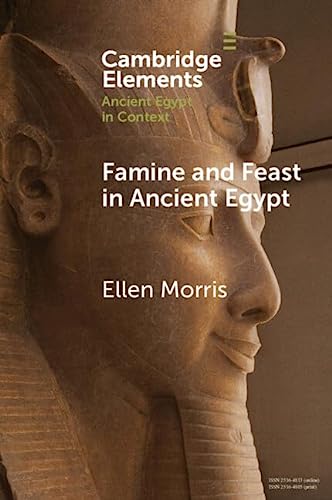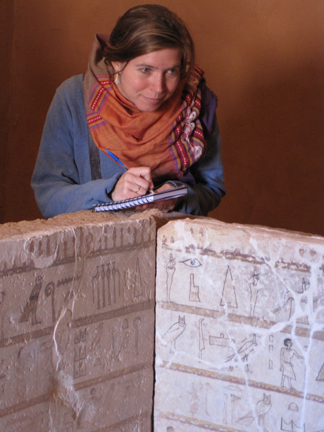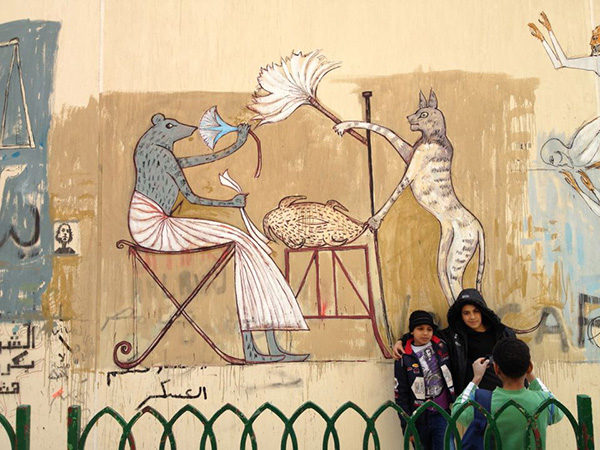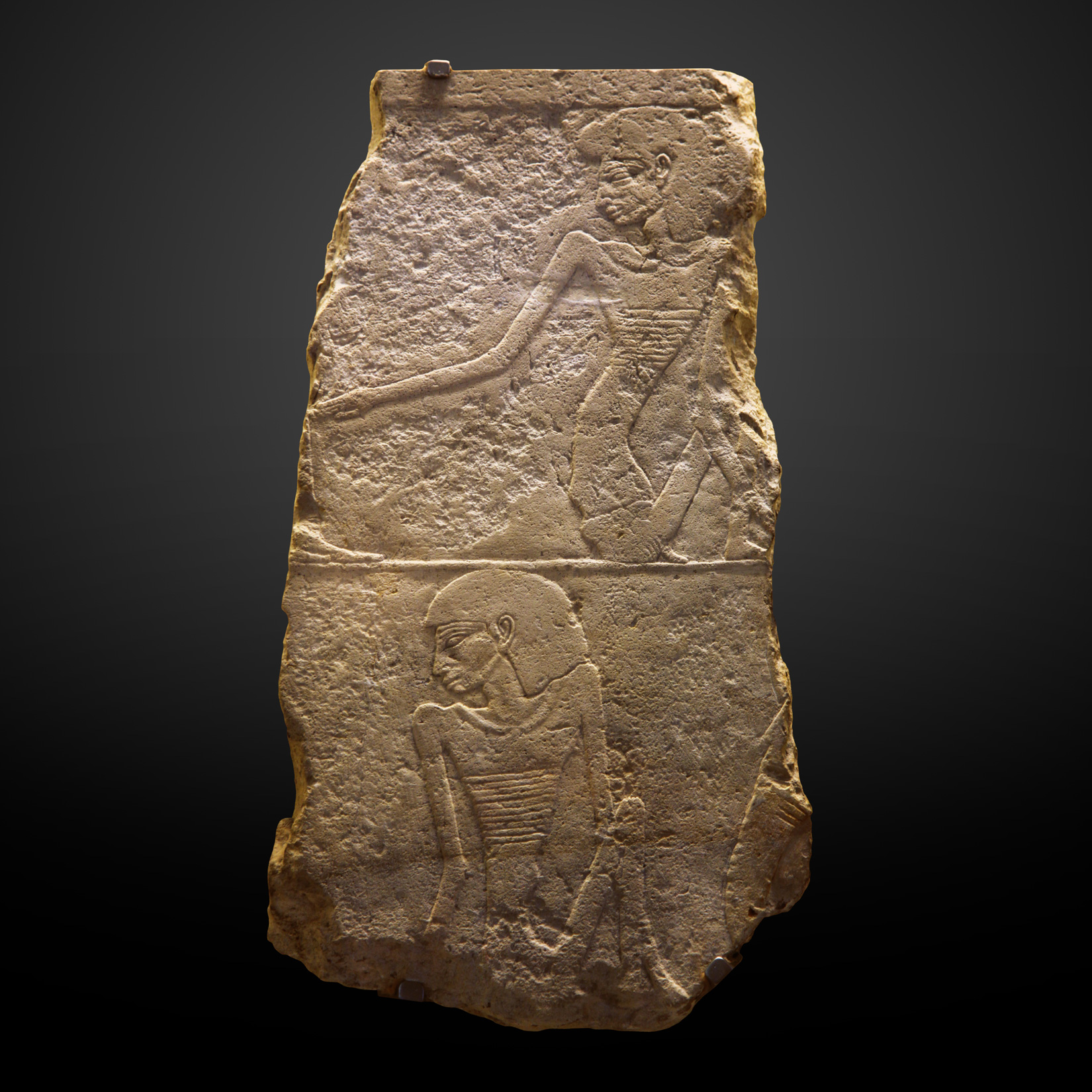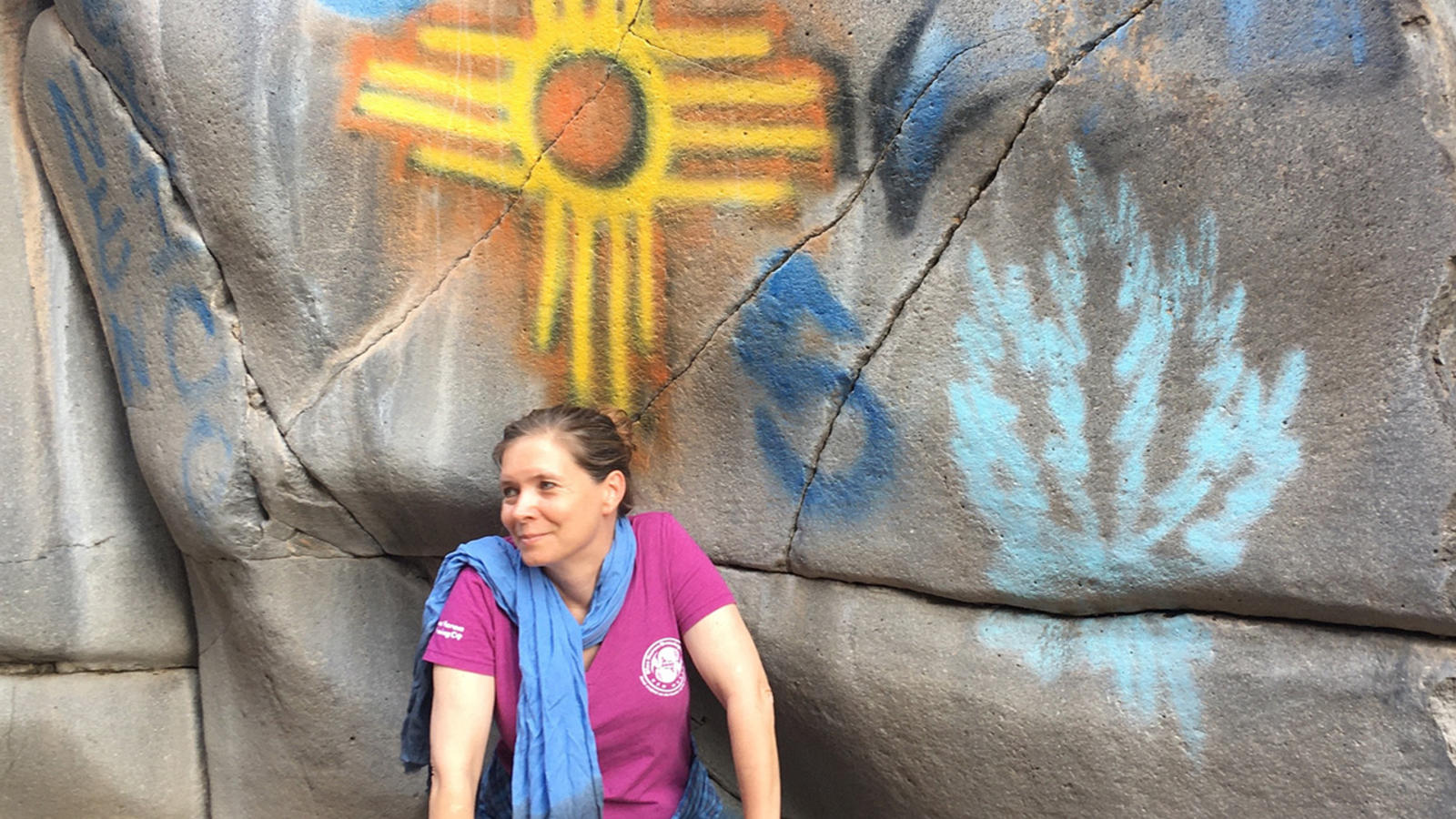
For Ellen Morris ’91 — Barnard’s associate professor of ancient studies and chair of Columbia’s Classical Studies Graduate Program — past dynamics are often observable in the present. When COVID-19 became global news in 2020, Morris was fascinated by echoes of the 1918 flu pandemic. As the modern Middle East navigates a new period of extreme dryness, she has recognized societal trends familiar from ancient megadroughts.
These are just some of the past-informs-the-present connections that Morris addresses in her new book, Famine and Feast in Ancient Egypt, publishing this month. The book is the newest addition to the Cambridge Elements series on ancient Egypt.
“In prior articles, I have put some of the Egyptian statements about famine in dialogue with archaeological evidence,” said Morris. “I was particularly interested in numerous observations that social order had become inverted — for example, the poor had become well-off, and vice versa. Social upheaval seemed not only evident in the archaeological record but also characteristic of some modern situations, such as regime change or the many pandemic-related strikes and layoffs.” What Morris was especially interested in unearthing was the psychology of the ancients who lived through famine and feast.
The book investigates the social memory of famine in pharaonic and Greco-Roman Egypt and how maintaining intergenerational collective memory can help societies stave off or brace against potentially recurring tragedies, such as devastating climatic downturns, food shortages, and political unrest.
Morris — who majored in ancient studies at Barnard — brings ancient Egypt to life for her students through an interdisciplinary approach that includes archeology, social and environmental history, and the study of race and ethnicity. Earlier this May, she co-led a group of eight Columbia graduate students on a trip to western Turkey to study its exuberantly multicultural ancient cities.
Prior to this trip, Morris has excavated in the Nile Valley at Abydos, Mendes, Deir el-Ballas, and at the site of Amheida in the Dakhleh Oasis. She is also the author of two previously published books: Ancient Egyptian Imperialism (2018) and The Architecture of Imperialism: Military Bases and the Evolution of Foreign Policy in Egypt’s New Kingdom (2005).
In this Break This Down interview, Barnard’s expert Egyptologist discusses the cyclical dance between famine and feast and the role that ancient collective societal memory can play in modern times.
Did you face any roadblocks or gaps in archival knowledge while researching this topic?
Attempting to study famine in ancient Egypt is challenging because textual evidence is limited, and its interpretation is contentious. For instance, during the long First Intermediate Period (c. 2160–1895 BCE), we have an unusual number of mentions of famine, hunger, years of “misery” or “belt-tightening,” and even cannibalism. But some scholars argue that individuals who referenced these hard times exaggerated the crisis to make their own interventions look more heroic.
To complement these eyewitness reports, we have texts set in this period in which individuals accuse kings and gods of wrongful neglect, pharaohs express weakness and regret, peasants rail against injustice, prophets foretell times of suffering, and individuals contemplate suicide. But these sources postdate the First Intermediate Period, so many scholars regard them as imaginative at best.
In the period between the First and Second World Wars, scholars tended to take these ancient texts at their word, because the tumult they referenced felt familiar. In more recent times, Western academics have generally discounted the credibility of the sources, perhaps because they feel unfamiliar. To break this impasse, I wanted to introduce new evidence into consideration.
One factor that prompted me to write this book is the abundance of data that has accumulated in the last two decades about a megadrought that lasted in Egypt, roughly from 2200 BCE to 1900 BCE. I was also interested in obtaining a better sense of the typical trajectories and experiential aspects of Nilotic famines. To this end, I sought out records of famines that took place in medieval and Ottoman Egypt. After reading these accounts, the ancient literature no longer feels histrionic!
To understand the literature, I also needed to understand how starvation felt from a psychological perspective. So, I delved into diaries, memoirs, and oral histories relevant to the 900-day siege of Leningrad, in which hundreds of thousands of civilians died of starvation. This material, and the Egyptian texts, shared many observations in common. For starving individuals, family relations deteriorated, empathy evaporated, suicide beckoned, and people turned increasingly inward for comfort, whether to diaries or to — in the Egyptian case — aspects of their own soul.
How does contemporary Egypt use its knowledge of famine from ancient times, if at all?
In the final chapter, I write about how social inversion — evident in the textual and archaeological record relevant to famines in Egypt — had been incorporated into a festival that celebrated the annual flooding of the Nile River. Like many festivals, this one involved a period of solemnity — when famine was contemplated — that was followed by a riotous good time. For children, the celebration involved listening to animal fables that featured inversion, especially those concerning the deeds of a mouse who led a revolution against cats. For the elite, the pretensions of the upstart mouse were laughable, but for ancient Egyptians who felt oppressed, this character may have helped perpetuate the social memory that revolts had the potential to succeed.
I was fascinated that in the upheaval that occurred in the wake of the Arab Spring in Egypt, the Egyptian artist Alaa Awad painted a street mural that depicted one of the illustrations that delighted children at this festival: a cat serving an enthroned mouse. I corresponded with Alaa Awad to get permission to use the image in the book and asked him about his choice of subject matter. He didn’t know its backstory, only that it spoke to him of revolution.
Are there lessons that the West can learn from how ancient Egypt approached and retained social memory?
I argue in the book that memories of severe famine were transmitted in ancient Egypt primarily through firsthand accounts, empathetic historical fiction, prophecy — in which a past or present calamity is “prophesized” — and the festival of the Nile. The problem with all but the last medium, however, is that famine is deeply depressing. Thus, accounts of it were mostly avoided in times of plenty.
In my Egypt in the Classical World class, I teach about a festival that took place in Greco-Roman Egypt that commemorated the divine intervention that saved a subset of the Jewish people from a pharaoh who planned to use drunken elephants to stampede them. This class almost always falls around [the Jewish holiday] Purim, and a Jewish auditor of mine remarked to me that the drunken elephant festival belongs to a suite of Jewish holidays that can be summarized by “They tried to kill us. They didn’t succeed. Let’s eat.” Passover, Hanukkah, Purim, and the festival of the drunken elephants all incorporate(d) plenty of fun to balance the hard truth that religious minorities are often persecuted.
This observation — that disturbing messages are most effectively transmitted when coupled with light or hope — reminds me of new tactics in climate change activism. While climate specialists need to issue dire warnings to get people’s attention, they’ve found that too much pessimism results in paralysis and fatalism. Thus, many articles now balance disturbing revelations with measured optimism and offer tips for how individuals can help combat climate change by making small changes in their own lives.
How, then and now, does famine affect politics?
Regional famines tend to destroy governments. Climate refugees place stress on existing resources and are catalysts for increased xenophobia. People riot and direct their anger at governments and elites who they feel have broken the social contract. Societies — now and in the past — seem able to tolerate extremely high levels of social inequality. The situation changes dramatically, however, when intense hunger renders these inequalities a matter of life or death.
Last year, the Food and Agriculture Organization of the United Nations (FAO) and the United Nations World Food Programme both issued warnings that a looming global food crisis is poised to cause social unrest and famine. The social memory of exactly how damaging famines are for individuals, families, communities, and governments urgently needs to be recalled if we are to avert the worst-case scenario.

